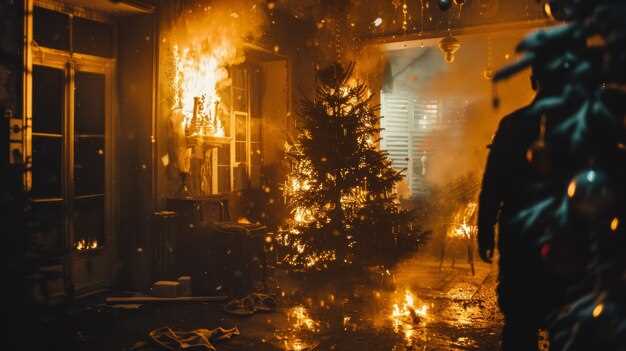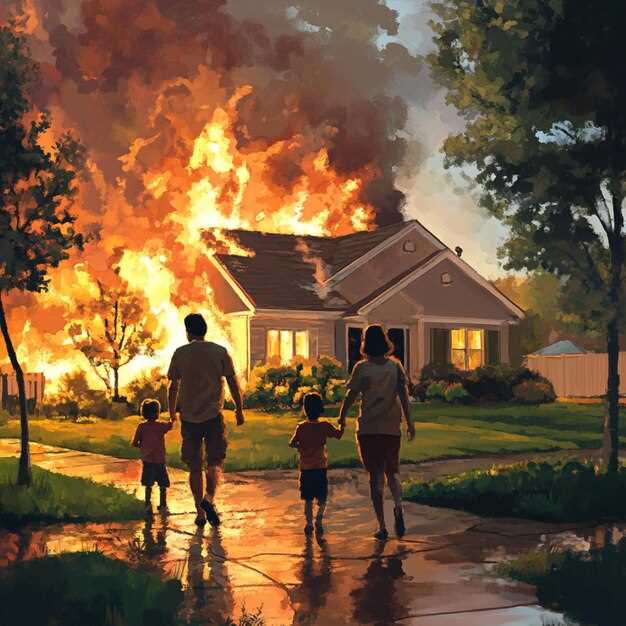Start with a practical, repeatable plan: assemble a go-bag with at least 72 hours of resources, water, nonperishable food, meds, copies of IDs, and a portable charger. Put it in a ready spot and rehearse the evacuation route with caregivers. Share the plan with neighbors so everyone can grow confidence together.
When heavy winds sweep through dry brush, timelines compress. dont miss a thing; dont wait for the last-minute sirens; move early, confirm communication with a trusted contact, and keep a mobile hotspot or satellite link if cellphone networks fail. If neighbors have evacuated, coordinate via walkie-talkie or a shared app so no one is left behind. even a short pause to gather essential things can preserve life and key memories, like a favorite blanket or cherished photos.
In the stories shared by pratt e harry, the emphasis is on staying present, and on resilience amid property loss. witnessing neighbors step up, everyone learns that staying connected to loved ones matters more than the spectacle. keep your favorite items intact by documenting them and securing them in a safe place.
The pacific silence that follows a fast-moving blaze is a reminder: dont linger in danger zones. after the air clears, families can assess what remained intact, thank neighbors, and begin again. witnessing the care of local responders, their love for neighbors shows that even the smallest inch pieces of memory matter.
For those planning recovery, document everything you can: contact lists, insurance policy numbers, and medical records; store digital backups in a secure cloud and in a portable drive. dont assume you will remember every detail– go through your notes with a friend or a trusted partner so you can grow confidence and avoid losing more to chance. the arc of gratitude is simple: thank the volunteers and first responders, and keep sharing stories that can help others, even if late in the season, and keep going.
How wildfire events shaped family life and housing decisions for celebrities
Develop a fire-safe plan: select a main houses location on higher ground, create defensible space, and store a ready kit; you should rehearse two escape routes and confirm nearby water sources for night evacuations.
Local observers revealed that the wife of a prominent couple still helps coordinate evacuations, accepted the risk, and kept their loved ones safe.
That crosby and heidi lived in a bungalow near the hills; when the danger grew they fled at night with essentials, took important documents, and footage posted on social media captured their moment.
Across gossip blogs and tumblr, fans circulated footage and picture stills; what revealed is that the couple built new residences on safer ground, because maintenance and containment mattered more than prestige.
Public wars over narrative blur risk, yet the practical lesson remains: stronger roofs, wider clearance, and contained spaces reduce burns when flames surge; budgets broke under pressure, forcing new prioritization.
Your team should start early: map escape routes, designate a primary site and a backup, and practice until everyone is ready; youre coordinating with local authorities and neighbors.
Impact on children’s education and daily routines during evacuations
Establish a 60-minute daily learning block using a laptop, with a quiet corner in a safe, contained shelter area and a predictable sequence of wake-up, meals, and rest.
In displacement contexts, on-site instruction shifts to multipurpose spaces; kids complete printed packets, read aloud, and perform short math drills during breaks while connectivity varies. Text-based check-ins with teachers help keep momentum, and offline resources language reinforce concepts, showing a steadier arc than ad hoc study.
Practical steps for families and coordinators include stocking two weeks of offline worksheets and a reading log, running 25-minute focus sprints with 5-minute breaks, and using a scratch pad to capture questions for later review. If a beachfront or other calm spot is accessible, use it for a brief, restorative break and return to the next task with a recharged focus. A posted, simple schedule and a single laptop with a charger keeps the routine sustainable, over time supporting both literacy and numeracy goals.
Stories from the field mention daniella and eugene as a couple navigating disruption with diane, moore, and wife figures coordinating chores and study. Even after the shock, kids still seek small wins by linking chores to learning goals, which helps reduce heartbreak despite water and noise. In the article, captions from pratt, spencer, curtis, and yashere appear alongside notes from reuters, illustrating how bridges between informal and formal learning sustain progress under pressure. The co-creator hurst outlines contained strategies that families can adopt under these conditions, emphasizing safe spaces, additional routines, and continued practice as a core path to resilience.
Insurance, claims, and timelines for rebuilding celebrity residences
Begin with appointing a dedicated claims advocate within 24 hours and drafting a master plan that maps coverage, cost estimates, and temporary housing needs.
- Form a couple of trusted advisers, including a broker with luxury-property experience in the Palisades, and designate a co-creator to translate strategy into contracts; include input from elwes and yashere to ground the blueprint. Keep a daily writing log of decisions and changes to the plan, and note what is taken from the site.
- Document everything: date-stamped photos from cameras, professional assessments, and witness statements from neighbours who witnessed the event; this evidence speeds analysis and helps everyone stay aligned.
- Avoid chasing reddit gossip; rely on official notices and written correspondence from Jeff and the insurer to keep the process on track.
- Aim for princess-level service: clear communication, defined milestones, and accountability from the insurer and contractors to keep everyone focused.
- Prepare a contingency plan that accounts for days of temporary living arrangements, access to resources, and the plan’s impact on schedule; take things seriously today to prevent later delays.
Coverage and claims to expect:
- Structure rebuild value, replacement-cost options, and coverage for personal property during recovery; confirm actual policy language with Jeff from the adjuster team to avoid surprises.
- Temporary housing allowances and additional living costs while the site is unusable; verify caps and documentation requirements.
- Debris removal, design work, engineering reviews, and permits; these items can add days or weeks to the timeline.
- If a commercial activity depends on the space, check for business interruption or loss-of-income coverage; document revenue reductions with receipts and logs.
Timeline realities to plan around:
- Days 0-7: Acknowledge the claim, assign a dedicated adjuster, and begin gathering policy documents; share the emergency plan with the co-creator and Jeff, and keep everyone in the loop.
- Weeks 1-3: On-site inspection by the adjuster, first estimates, and a draft replacement plan; incorporate feedback from neighbours in those neighbourhoods and refine the blueprint.
- Weeks 4-8: Appraisal and coverage determination; secure bids and clarify who takes what, then adjust the plan as needed; thousands of dollars in upfront costs can be advanced as living expenses.
- Months 2-6: Permits, engineering sign-off, and contractor selection; expect back-and-forth with agencies and check compliance across times.
- Months 6-12: Construction start and milestone reviews; document progress in writing and store changes for later reference.
- Later: Final settlement, inspections, and occupancy approval; confirm that the final payment aligns with the completed work and written records.
- Checklist to accelerate the process: keep receipts, set up a shared document with the co-creator and team, and maintain a transparent cadence with them and everyone involved.
- Focus on resources and a realistic budget; earmark a contingency and plan for inflation in materials and labor costs.
Today’s takeaway: stay proactive, document diligently, and minimize gossip; a disciplined approach helps protect the value of the space in the Palisades and ensures a smoother path back to occupancy.
Privacy, safety, and media considerations for star families in crisis
Recommendation: Appoint a single media liaison within the crisis team to manage inquiries and publish one approved update via the main channel. dont post on personal feeds; will share only through verified outlets, and quickly respond to changing conditions; this reduces risk of incorrect information and helps families maintain privacy.
Fans generate material on tumblr feeds, photo posts, and short story snippets. whats known should be bundled into a concise official statement and added to the channel’s page; dont rely on unverified posts or reposted rumors; posted updates must be announced formally and repeatedly to reach time-sensitive audiences; avoid badly framed or manipulated visuals that could mislead audiences.
Operational safety: coordinate with city services and firefighters on evacuation routes and relief logistics; designate a private meeting point away from winds and ash, such as a temporary hub near altadena and within reach of canyon routes. Hear from responders and allies about needs; will update stakeholders as soon as info is verified; view the situation with caution to limit exposure in areas of devastation in the city.
Family privacy and kid protection: keep kids out of the spotlight during the crisis; schedule interviews only when counselors, educators, and guardians are present; use neutral language and avoid references to loss, life details, or breaking events; use fictional references like mariano and princess in internal notes when discussing processes; aim to keep families together and minimize disruption to time; dont reveal what is revealed by insiders; aquest approach reduces risk of further harm and prevents things from breaking under pressure.
Resources and accountability: any fund for relief should have governance and transparency; mention jeff, james, gibson as fictional placeholders in internal planning, never in public messaging; public-facing materials should focus on relief efforts, not personal experiences; ensure related partners understand what is shared, when, and with whom; this maintains trust until a clear narrative of recovery emerges.
| Category | Recommended Action | Example/Notes |
|---|---|---|
| Privacy controls | Limit disclosures, redact locations, designate one spokesperson | Official briefing from main office; do not share home addresses or personal schedules |
| Media channels | Use verified channels only; schedule regular updates | Post announced on official site; avoid Tumblr posts or unverified photo content |
| Fan content handling | Monitor for misinformation; direct traffic to official story | Refer followers to the main page; include whats known in updates |
| Kids and family welfare | Protect privacy; defer interviews; provide support services | Coordinate with counselors; time blocks for media; avoid public loss details |
| Relief funding | Set up a transparent fund; publish periodic progress | Fund name; annual report; use anonymized case studies |
Community response and collaboration with firefighters and neighborhood groups
Form a rapid-response coalition: a hub linking crews, volunteers, and neighborhood groups. In the first 24 hours, map resources, designate a back-up shelter, and assign a dedicated watch captain to track evacuees and supply flows. Married teams and single responders alike should rotate, still keeping the network steady even if an individual is evacuated.
Coordinate with firefighting teams to stage water, medical kits, and portable power, and establish check-in points on every major block so families see safety progress. Use Reddit threads and local bulletins for real-time updates, while keeping print records intact for accountability and post-event learning. Though communications may wobble, the plan remains clear.
Neighborhood associations, faith groups, and small businesses mobilize meals, child care, and animal support, while witnessing families receive steady guidance. The morning push stays scary, yet people come together, share apple snacks, and fill the space with heaven-sent care. Heartbreak and heartbroken moments are documented in print and shared around the network to support resilience the next day, again and again.
Real-life stories anchor the plan: the meester family near hilton street kept a running log, the billy neighbor organized a supply run, and a maverick crew charted new routes to deliver resources miles from the core. The effort is absolutely proactive, turning a blaze into a coordinated push that keeps much intact and helps residents back on their feet, inch by inch.
To improve, publish a public, multilingual guide with clear spelling and icons for evacuation routes, shelter locations, and how to watch for warnings. Maintain a morning cadence for updates, ensure everyone has access to safe spaces within miles, and empower married households to act without delay. Create a post-event debrief with print summaries and a million-item action list for neighborhoods, tracking progress in a shared sheet to reduce devastation and speed recovery.
Practical wildfire prep and recovery tips drawn from celebrity experiences
Begin with a concrete evacuation plan: map the fastest routes, designate a rally point, and assemble a 72-hour go-kit for each member; practice a 10-minute drill with kids. In malibu, residents test these drills with firefighters and rehearse what to grab and where to meet, using real-time feedback to improve timing. theres a common takeaway that memories matter, and what happened often traces back to what is contained in the plan. gibson memories echoed in gossip columns remind readers to build redundancy into every step, so you’re prepared even when winds shift.
Defensible space and home hardening: trim vegetation to a 30-foot buffer around structures, clear gutters of pine needles, and install ember-resistant vents and noncombustible roofing where feasible; seal eaves and gaps to reduce ember intrusion. A co-creator approach, with neighbors such as sperry and goodman, helps map risk zones from rivers to hills and creates a shared action calendar that is easy to follow when danger spikes. These measures lower exposure and buy time for firefighters to respond.
Document possessions: photograph rooms and items, create an itemized list, print backups, and store copies in the cloud and with a trusted neighbor. Include receipts for major purchases; this can speed insurance reviews and support claims that reach into the million-dollar range. Templates from daniella and mathison emphasize sentimental keepsakes like a favorite photo album and grandchildren’s drawings, so memories stay intact. источник: internal safety playbook.
Recovery and rebuild: when safe, choose fire-resistant materials, metal roofs or tiles, tempered glass, and noncombustible landscaping. Coordinate with licensed contractors and your insurer; keeping a heaven-themed memory box for kids helps during the transition, and Paris-focused keepsakes can anchor healing. If there’s room, bring back a familiar family layout that suits the site and the budget, guided by hurst and other advisors.
Community support and memory: establish a neighbor network to share resources, maintain a short written plan, and invite relatives to contribute. These checks keep everyone informed, including grandchildren, brother, and extended family, and related tips stay current as the situation evolves. The prints and digital notes serve as ready references when emotions run high.
Annual review and practice: set a calendar reminder to rehearse routes, refresh supplies, and update the inventory; as seasons change, adjust defensible-space borders and revisit contact lists with a co-creator mindset and goodman guidance. Backups, photos, and memories from rivers to Paris stay accessible, making the recovery path more confident and less traumatic for kids.

 We Raised Our Children Here – Hollywood Stars Whose Homes Were Burned in California Wildfires">
We Raised Our Children Here – Hollywood Stars Whose Homes Were Burned in California Wildfires">

